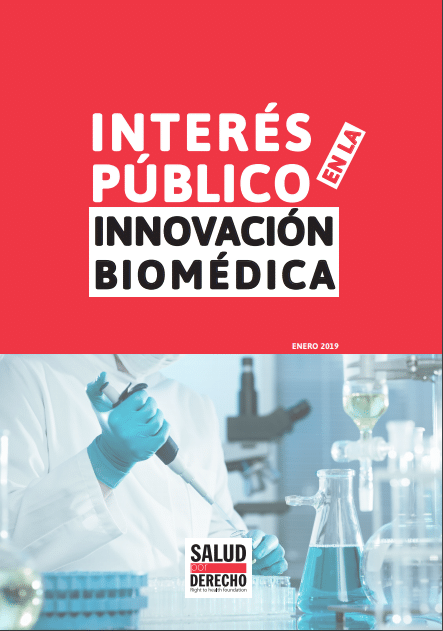- In Spain, the Administration leads 62% of spending, compared to 38% that comes from the private sector
- The state loses control over public investment when the results of investigations are transferred from universities and research centers to companies
- Nine of the ten companies that have received more financial aid for health projects from 2010 to 2016 are big pharmaceutical companies
Madrid, January 29, 2019. In Spain, most of the investment in health Research and Development is carried out by the public sector, mainly in the research centers dependent on the Administration and in universities, but that public investment is invisible at the moment it is transferred to the industry, mainly pharmaceutical. This is one of the main conclusions of the report “Public interest in biomedical innovation”, which we publish today from Salud por Derecho. The study analyzes how, although a large part of the investment is from the public sector – 62%, versus 38% of companies – it loses control over it when the product or technology resulting from the research is transferred to the private sector. In this way, the Administration does not have the capacity to influence matters as important as the price or management of intellectual property, despite being the main purchaser of medicines and health products that will result from that public investigation.
The report also analyzes the conditions under which this transaction takes place from universities and research centers to companies. It notes how the inventions developed in these public centers are usually protected by a patent and subsequently transferred to the companies through a license to exploit the technology or transfering its ownership in exchange for an economic agreement. In this process, the vast majority of research centers and universities have policies for the management and transfer of their industrial and intellectual property. However, according to the study, they do not contemplate criteria of public interest.
These criteria would be measures that help to make public investment visible when it passes into private hands; transparency criteria that facilitate access to all information about projects and inventions that have received public funds; measures that ensure that the final products will have affordable prices that contribute to the sustainability of the system; or alternatives to the current model of knowledge management and industrial and intellectual property. On the contrary, exploitation licenses tend to be exclusive, which give rise to future monopolies. Confidentiality agreements are very common, closing the door to shared knowledge and transparency in terms of accessibility in the records and results of biomedical research generated from scientific activity financed with public funds.
Less state budget, more autonomic
At a budgetary level, the report includes the cuts in research of recent years, especially at the state level, which has led to a reduction in the number of projects, the abandonment of research lines and a precarization of the working conditions of the research staff. The report highlights that, from 2010 to 2016 and in global terms, both the contributions of the Autonomous Communities as a whole and funding from European programs, mainly Horizon 2020, have been key. However, these new sources of funding do not replace the responsibility of the State Administration to increase investment and its commitment to scientific research.
The report highlights the need for better mechanisms to understand public investment in biomedical innovation, the destination of these investments and the need to make visible their contribution to the R&D value chain.
The strategy of the companies
The pharmaceutical sector is the main beneficiary of the grants and loans granted in the field of health and biotechnology by the Center for Technological and Industrial Development (CDTI, in Spanish), the body in charge of granting aid to the industrial sector. Nine of the ten companies that have received the most financing in the 2010-2016 period are pharmaceutical companies. These are also very significant companies in the sector and, in some cases, subsidiaries of large multinationals, half of them interested in oncology projects, neurodegenerative diseases and mental illnesses.
Proposals
The report includes a series of proposals that could be put in place to reverse this situation as soon as possible and allow for greater monitoring and social impact of public investment in R&D, taking as a reference experiences in other countries. Among them, it details specific measures on intellectual property management, knowledge transfer or accountability, which would result in having public and complete information on what is financed, how it is financed, what results are obtained, what results are already patented who are transferred and / or licensed.
In addition, the study calls for consensus on a definition of public interest and from there establishes a series of criteria to ensure transparency, access and affordable prices of medicines and health products resulting from public investment in R&D. These criteria would apply to grants, agreements that regulate the participation of universities and public research organizations in public-private projects, the participation of public health centers in clinical trials, or tax incentives, among others. In fact, in Spain, the Sustainable Economy Law already incorporates aspects of public interest and could serve as a starting point.
Lastly, it includes the need to promote policies and initiatives that make it possible to transparently manage conflicts of interest in biomedical innovation and is committed to developing consensus guidelines and recommendations that will better define the relationships between public and private actors.
—————-
Exectuve summary (in english) available trhough this link. Read the full report (in spanish) cliking the image below.













